Rob Bignell's Blog, page 356
October 17, 2013
Oxford library hosts editor, cousin novelist
A special thanks to the Oxford (Wis.) Public Library for hosting “An Interview with Two Authors” on Tuesday night. My cousin, novelist David Bignell (left in photo), and myself (right in photo) discussed our books and self-publishing for about an hour. The interview was taped and will play over cable stations in Marquette, Adams, Columbia and Waushara counties during the next month or so; I’ll post the interview on YouTube once it’s edited.
to the Oxford (Wis.) Public Library for hosting “An Interview with Two Authors” on Tuesday night. My cousin, novelist David Bignell (left in photo), and myself (right in photo) discussed our books and self-publishing for about an hour. The interview was taped and will play over cable stations in Marquette, Adams, Columbia and Waushara counties during the next month or so; I’ll post the interview on YouTube once it’s edited.
Need an editor? Having your book, business document or academic paper proofread or edited before submitting it can prove invaluable. In an economic climate where you face heavy competition, your writing needs a second eye to give you the edge. I can provide that second eye.
Related articles
 Smiling Tree Writing interviews IRES editor
Smiling Tree Writing interviews IRES editor Editing client releases action-adventure novel
Editing client releases action-adventure novel Watch for consistency errors in your story
Watch for consistency errors in your story Place commas inside quotation marks
Place commas inside quotation marks How to promote multiple books on your website
How to promote multiple books on your website
October 16, 2013
Place commas inside quotation marks
One punctuation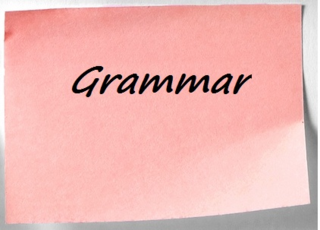 matter that might keep you up at night is where to place a comma when appearing with quotation marks. Well, you can quote me on this: Commas appear inside quotation marks, according to the book “Use the Right Word,” and other sources.
matter that might keep you up at night is where to place a comma when appearing with quotation marks. Well, you can quote me on this: Commas appear inside quotation marks, according to the book “Use the Right Word,” and other sources.
The British, however, place the comma outside of the quotation mark. But they also drive down the left side of the road.
This American “peculiarity” soon may be put to rest, though. Many websites place the comma outside of the quotation mark so that the comma doesn’t become part of a link (The title of a book probably is linked to its Amazon.com page.); having a comma as part of the link looks a little untidy, after all. In fact, in my print books, I place the comma inside but on my websites the comma always goes outside.
Given this, don’t be surprised if in a quarter century or so we revise this rule for print. For the moment, though, tuck that comma inside the quotation mark and sleep tight.
Need an editor? Having your book, business document or academic paper proofread or edited before submitting it can prove invaluable. In an economic climate where you face heavy competition, your writing needs a second eye to give you the edge. I can provide that second eye.
Related articles
 Avoid placing attribution before dialogue
Avoid placing attribution before dialogue Five style issues to watch for in your story
Five style issues to watch for in your story Mastering the fine art of dialogue punctuation
Mastering the fine art of dialogue punctuation
October 15, 2013
Treat readers to vivid passages in your story
One of the kindest things writers can do for their readers is employ local dexterity. This occurs when images, sentences, paragraphs and scenes are pleasurable to read because of their vividness.
kindest things writers can do for their readers is employ local dexterity. This occurs when images, sentences, paragraphs and scenes are pleasurable to read because of their vividness.
Consider this passage from F. Scott Fitzgerald’s “The Great Gatsby,” just as Gatsby is about to die:
Perhaps he didn't believe it would come, and perhaps he no longer cared. If that was true, he must have felt that he lost the old warm world, paid a high price for living too long with a single dream. He must have looked up at an unfamiliar sky through frightening leaves and shivered as he saw what a grotesque thing a rose is, and how raw the sunlight was on the scarcely created grass. A new world, material without being real, where poor ghosts, breathing dreams like air, drifted fortuitously about...like that ashen, fantastic figure drifting toward him through the amorphous trees.
Notice how Fitzgerald describes Gatsby’s perceptions in a clear and striking manner. Because the images are life-like, readers feel it as they would an immediate experience.
Be careful of using local dexterity to hide the absence of drama or conflict, however. If you enjoyed reading a passage you wrote but keep telling yourself that nothing happened in it, you’re going overboard with local dexterity.
Need an editor? Having your book, business document or academic paper proofread or edited before submitting it can prove invaluable. In an economic climate where you face heavy competition, your writing needs a second eye to give you the edge. I can provide that second eye.
Related articles
 Tighten writing by cutting begin fallacy
Tighten writing by cutting begin fallacy Offer readers a sample chapter page on website
Offer readers a sample chapter page on website Avoid handwaving to cover a story flaw
Avoid handwaving to cover a story flaw Write a great narrative hook for your story
Write a great narrative hook for your story
October 14, 2013
Make story interesting by establishing stakes
The plot 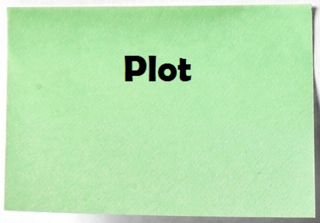 of a story is more interesting and exciting if the characters have something to gain or lose.
of a story is more interesting and exciting if the characters have something to gain or lose.
Because of this, the characters in your story should something at stake, or some personal interest or involvement in solving the story’s conflict. Establishing what these personal interests or involvement are early in the story and then returning them through the rising action generates reader interest.
The “stakes” always revolve around two basic questions: “What does the protagonist want?” and “What if the protagonist fails to get it?” For example, in Isaac Asimov’s “Foundation,” the character Salvor Hardin wants to ensure his home planet of Terminus (one of two depositories of scientific knowledge and reason in which humanity’s future depends) survives the collapse of the Galactic Empire, which is fragmenting into several war-like kingdoms. If he fails, Terminus will be taken over by the warrior kingdoms – and humanity will fall into a dark ages that lasts thousands of years. Those are high stakes.
Remember that virtually all stories center on a character that possesses some want that if unfulfilled means some disaster. The plot of the story is little more than the obstacles that the character must overcome as trying to fulfill this want.
Need an editor? Having your book, business document or academic paper proofread or edited before submitting it can prove invaluable. In an economic climate where you face heavy competition, your writing needs a second eye to give you the edge. I can provide that second eye.
Related articles
 Draw readers into story with great opening lines
Draw readers into story with great opening lines Add ticking clock to create sense of urgency
Add ticking clock to create sense of urgency Your main character must fail
Your main character must fail Make story interesting by establishing stakes
Make story interesting by establishing stakes Basic guidelines for your story's rising action
Basic guidelines for your story's rising action
October 13, 2013
Smiling Tree Writing interviews IRES editor
The blog Smiling Tree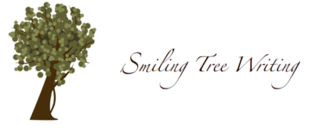 Writing ran an interview of me Thursday about editing and writing books. Smiling Tree Writing is a run by Dava Stewart, a professional copywriter out of Tennessee; her blog covers writing, self-publishing and books. Among the topics addressed in the interview are common problem seen in manuscripts, red flags that would let writers know their work is not ready for an editor, and how writers can know what level of editing they need.
Writing ran an interview of me Thursday about editing and writing books. Smiling Tree Writing is a run by Dava Stewart, a professional copywriter out of Tennessee; her blog covers writing, self-publishing and books. Among the topics addressed in the interview are common problem seen in manuscripts, red flags that would let writers know their work is not ready for an editor, and how writers can know what level of editing they need.
Need an editor? Having your book, business document or academic paper proofread or edited before submitting it can prove invaluable. In an economic climate where you face heavy competition, your writing needs a second eye to give you the edge. I can provide that second eye.
Related articles
 Improve your writing by dumping fuzzy words
Improve your writing by dumping fuzzy words Why writers must learn to handle rejection
Why writers must learn to handle rejection Writers can blog about variety of topics
Writers can blog about variety of topics Write a great narrative hook for your story
Write a great narrative hook for your story Editing client releases action-adventure novel
Editing client releases action-adventure novel
October 12, 2013
Get ideas from you head onto paper
Ever have an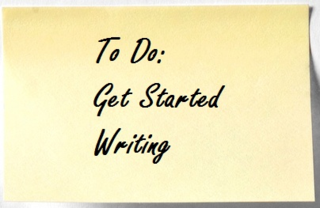 image in your head that would be great for your story, but you just can’t think of the right words to use so it gets on paper? You’re not alone. Many writers frequently face this problem.
image in your head that would be great for your story, but you just can’t think of the right words to use so it gets on paper? You’re not alone. Many writers frequently face this problem.
During my years of editing authors’ short stories and novels, many have shared with me how they dealt with such struggles. Usually I find out by saying to them, “That was one great descriptive paragraph you wrote! How did you come up with it?” They typically grin, shake their head, and respond, “You know, that was the most difficult paragraph to write! I couldn’t get onto paper this jumble of images in my head!”
They then go on to tell me how they worked through it. Generally it involved one of the following five strategies:
g Freewriting – Rather than stress over getting the wording just right, simply write down everything that comes to mind. Sometimes it will be a list of images, other times it will be a long, run-on paragraph, but whichever approach you use, don’t worry about typos, punctuation, capitalization, sentence structure, chronological order, or anything else.
g Sensual dissecting – Make a list of what’s in your head by describing it through each of the senses. What does it look like? What does it sound like? Smell like? Feel like? Taste like?
g Spatial examination – List what the image looks like by describing one section of it and then another section. For example, a landscape might be described by looking at the foreground, the middle ground, and then the distance. A person’s face might be described by looking at its top (eyes), midsection (nose and ears) and bottom (mouth and chin).
g Journalistic scrutiny – Standard newspaper ledes answer the questions of who, what, when, where, why and sometimes how. Do the same with your scene, by telling who you’re writing about, what that character is doing, the time of day it is, where the character is, and why she’s there.
g Concrete details – If you have an image in your head of someone experiencing an emotion, list all of the specific physical details that allow you to recognize what emotion the character is expressing. So don’t write that a character is “sad” but instead he is frowning, walking with a drooping head and hands in his pockets, stifling a sniffle, speaking in a soft voice, and so on.
Each of these methods essentially gives you a verbal sketch of your image or scene. Now, like a master painter, you refine it – in your case as a writer through rewriting and editing.
Need an editor? Having your book, business document or academic paper proofread or edited before submitting it can prove invaluable. In an economic climate where you face heavy competition, your writing needs a second eye to give you the edge. I can provide that second eye.
Related articles
 Deliver an eyeball kick for effective writing
Deliver an eyeball kick for effective writing Improve your writing by dumping fuzzy words
Improve your writing by dumping fuzzy words Forewords, prefaces and introductions
Forewords, prefaces and introductions
October 11, 2013
How to promote multiple books on your website
Previous entries  here were predicated on the idea that you are promoting a single, new volume, particularly one that has just been published. However, it’s possible that you already have published other books. If so, you’ll want to promote those books, too, on your website. After all, if a reader really likes your new book, they are highly motivated to purchase your older volumes.
here were predicated on the idea that you are promoting a single, new volume, particularly one that has just been published. However, it’s possible that you already have published other books. If so, you’ll want to promote those books, too, on your website. After all, if a reader really likes your new book, they are highly motivated to purchase your older volumes.
Your website then could take a whole new direction: It could be more about you the author than about the new book. You would still use the same elements as if you were promoting a single book, but the text and pictures on those pages would be geared toward promoting you as an author who has written several books.
Or your website could remain focused on your new book. Still, the text on your varying pages should reflect the fact that you’ve got other books for sale. For example, the header on your home page might now say:
Read “Raze and Ruin” the latest stunning novel by award-winning author Rob Bignell!
In addition, you probably want to include on your site a page that lists the other books you’ve published. Such a page should have the following elements:
g Header – The title should indicate that these are “Other Books by (Author’s name)”. Then Include a couple of explanatory lines indicating that on this page are previously published books that you’ve authored.
g Photo of each book’s cover – This only needs to be a thumbnail and only of the front cover.
g Blurb for each book – This essentially is a synopsis of the book. List any awards the book has received and include quotations praising it, especially if from prominent individuals or reviewers.
g Link for purchasing each book – Send the site visitor straight to the page where they make a purchase, such as the Amazon.com page for your book.
To decide which direction to go, be honest with yourself: Are people likely to purchase your book because you wrote it or because the story would really interest them? If you have a highly recognizable name – such as Stephen King, Danielle Steel or Larry Niven – people will give the book a look merely because your name is established as an author who turns out great tomes. Such authors ought to have a website focusing on them as an author. If not a single person in a group of people you don’t know would recognize your name, then you’re going to sell books because the story is intriguing. In that case, have the website focus on pushing your new book with opportunities for your new, loyal fans to discover your other published works.
Need an editor? Having your book, business document or academic paper proofread or edited before submitting it can prove invaluable. In an economic climate where you face heavy competition, your writing needs a second eye to give you the edge. I can provide that second eye.
Related articles
 How to construct your website's home page
How to construct your website's home page How to write an author's bio
How to write an author's bio What needs to go on your book's title pages
What needs to go on your book's title pages How to find a literary agent for your book
How to find a literary agent for your book
October 10, 2013
Enhance book with sidebars, breakout boxes
When penning 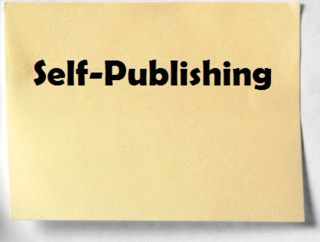 a nonfiction book, you probably want to include sidebars or breakout boxes in the book’s main text. Such tools can help make the main text more readable by dividing it so one large block of words doesn’t appear page and after. These elements also can provide a way for you to present ideas and concepts related to the chapter but that don’t really fit well in the main text. Further, they offer a neat way to summarize key ideas presented in the main text.
a nonfiction book, you probably want to include sidebars or breakout boxes in the book’s main text. Such tools can help make the main text more readable by dividing it so one large block of words doesn’t appear page and after. These elements also can provide a way for you to present ideas and concepts related to the chapter but that don’t really fit well in the main text. Further, they offer a neat way to summarize key ideas presented in the main text.
A sidebar typically is a brief article that appears next to the main text. For example, if writing a book about the Beatles, we might include a sidebar about whatever happened to all of the lads who once were members of the band (and its predecessors the Quarrymen and the Silver Beatles). This sidebar might appear at the point where the lineup of the four Beatles as we know them today – John, Paul, George and Ringo – was solidified. Since readers probably will want to know what happened next to the Beatles, telling how Pete Best and Eric Griffiths fared in life probably wouldn’t fit in the main text, though knowing the answer is of high interest. A sidebar solves the problem.
Breakout boxes hold related text that isn’t long enough to form a whole article for a sidebar. It might be a list, a quotation, or a factoid that relates to the main text. For example, in the Beatles book mentioned above, at the point in the main text where Ringo joins that band, we might include a breakout box that says “Though Ringo was the last to join the Beatles, he is the oldest of the four band members!”
Sidebars and breakout boxes should appear in a different font and point size than the main text so that they stand apart by it. Even though a serif typeface is best for paper books, sans serif is a good idea for sidebars and breakout boxes. You may want to employ an illustrator or designer to come up with visual elements to further set apart these two elements. Page through books that make use of sidebars and breakout boxes to see what styles and approaches you like, and then emulate them in your volume.
All sidebars and breakout boxes need a headline or header to indicate what they are about. Sometimes with breakout boxes, explanatory lines are needed to further explain exactly what the list appearing below it is about.
Need an editor? Having your book, business document or academic paper proofread or edited before submitting it can prove invaluable. In an economic climate where you face heavy competition, your writing needs a second eye to give you the edge. I can provide that second eye.
Related articles
 How your text should appear in a formatted book
How your text should appear in a formatted book Select best typeface for your book
Select best typeface for your book Select different fonts for paperback, ebook
Select different fonts for paperback, ebook What needs to go on your book's title pages
What needs to go on your book's title pages Formatting main text for your book
Formatting main text for your book
October 9, 2013
Flat line those errors on indices vs. indexes
If I had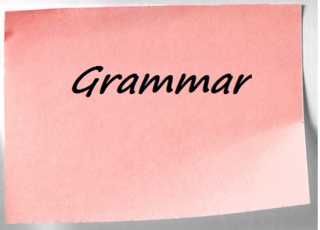 to chart the times writers have asked about the differences between these two words, it’d be, well, off the chart.
to chart the times writers have asked about the differences between these two words, it’d be, well, off the chart.
“Indices” is the plural of index, which makes it a noun. For example: “The politician presented several economic indices to prove we’re still in a recession.”
“Indexes” is the present tense of the verb “index.” To wit, “Jane indexes her DVDs alphabetically.”
This all may be changing, though. The Wall Street Journal’s stylebook says using “indexes” as a plural of “index” is acceptable, and many spell checks will tell you that “indices” is wrong.
Over time, we’ll probably see usage of “indices” fall to an all-time low.
Need an editor? Having your book, business document or academic paper proofread or edited before submitting it can prove invaluable. In an economic climate where you face heavy competition, your writing needs a second eye to give you the edge. I can provide that second eye.
Related articles
 Direct info: First hand vs. firsthand vs. first-hand
Direct info: First hand vs. firsthand vs. first-hand Cracking a bad habit: cement vs. concrete
Cracking a bad habit: cement vs. concrete Constructive tip: Build up vs. build-up vs. buildup
Constructive tip: Build up vs. build-up vs. buildup Get it right, all right vs. alright
Get it right, all right vs. alright Two l's or not two l's: Canceled vs. cancelled
Two l's or not two l's: Canceled vs. cancelled
October 8, 2013
Editor, novelist cousin speaking at Oxford library
My cousin,  two-time novelist David Bignell, and I will be discuss our books, writing styles, trials and tribulations of the art, and how to get started yourself on Tuesday, Oct. 15 from 6 to 7 p.m. at the Oxford Public Library in Oxford, Wis. David’s novels include “Demons of the Past” and the just released “Ryder.” My books include the novel Windmill, three writing guides, nine hiking/trail guides, and a collection of poetry. The library is located at 129 S. Franklin Ave.
two-time novelist David Bignell, and I will be discuss our books, writing styles, trials and tribulations of the art, and how to get started yourself on Tuesday, Oct. 15 from 6 to 7 p.m. at the Oxford Public Library in Oxford, Wis. David’s novels include “Demons of the Past” and the just released “Ryder.” My books include the novel Windmill, three writing guides, nine hiking/trail guides, and a collection of poetry. The library is located at 129 S. Franklin Ave.
Need an editor? Having your book, business document or academic paper proofread or edited before submitting it can prove invaluable. In an economic climate where you face heavy competition, your writing needs a second eye to give you the edge. I can provide that second eye.
Related articles
 Editing client, Ed Wyns, publishes first novel
Editing client, Ed Wyns, publishes first novel Hiking books now on sale at Annz Books
Hiking books now on sale at Annz Books Check out editor's books at Wisconsin libraries
Check out editor's books at Wisconsin libraries How to structure your nonfiction book
How to structure your nonfiction book Improve your writing by dumping fuzzy words
Improve your writing by dumping fuzzy words



